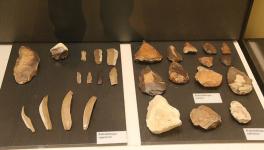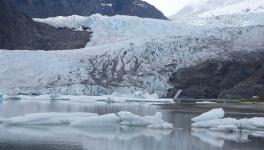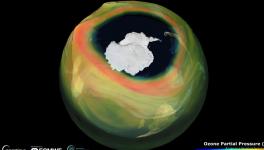Can Indian Ocean’s Role in Last Ice Age Determine Future Climate Change?
The Indian Ocean had played a very important role during the last Ice Age as far as climate change was concerned and can disrupt climate again in the future- the findings of a new study can challenge well established Pacific-centric theories on tropical climate change.
The study conducted at the University of Texas at Austin was published in Science Advances.
The scientists investigated changes in the climatic conditions of the tropics during the last glacial maximum (LGM)—the period of the last ice age- some 21,000 years back. During the LGM, ice sheets covered much of North America, Europe and Asia. Although, scientists knew about the radical climate change during that period, they didn’t have much knowledge about what drove these climate changes until now. The new findings can open up newer avenues for understanding radical changes in the climate of that period.
In addition, the findings of the study could be very effective in predicting future impacts of climate change—Pedro DiNezio, the leader of the study claimed.
The present-day Indian Ocean is characterised by stable rainfall patterns and being uniformly warm. The main reason giving rise to these conditions is the pattern of wind blow that prevails—from west towards east, which maintains warm water over the eastern side of the region and brings rains over Thailand, Indonesia, India and other such countries.
However, during the LGM period, the tropics witnessed dramatic changes like the reversal of prevailing winds and uncharacteristic changes in ocean temperatures. During that period, monsoon regions of the East Indian Ocean and Indonesia became drier and cooler while the west became wetter and became warmer—paleoclimatologist Jessica Tierney and a co-author of the study explained. This information can be obtained from the paleo geological data.
The Texas University scientists tried to find out what drove these massive changes in the Indian Ocean conditions. They adopted a computer simulation method to bring out a climate model and simulated how various glacial conditions affected climate. Then, they compared the simulated outcomes with the paleo climatic data. Paleo climatic data are the chemical signatures about our ancient climate stored in rocks and ocean sediments.
The climate model that the scientists developed suggested that as ice sheets during the LGM advanced over Canada and Scandinavia, sea levels lowered by as much as 120 meters (nearly 400 feet). This resulted in the formation of vast continental bridges that stretched from Thailand to Australia. The model suggested that these newly formed huge land masses reversed the prevailing winds. As a result, sea water blew towards west and cold water cycled up to the surface in the eastern Indian Ocean.
Indian Ocean Drove Radical Climate Changes
The new findings are important due to the fact that they could reveal the capability of Indian Ocean in driving radical changes in the climate of the tropics. It is also interesting that their model could simulate this complex process. The study also showed that the mechanisms that drove the climatic changes of the LGM may be unique to Indian Ocean. This holds special importance as current theories focus on the influence of the Pacific.
The new model could reproduce the glacial climate conditions and could be very fruitful in predicting the future climate of our planet. Despite the fact that the study has not specifically studied whether these kinds of climate mechanism can emerge as the earth warms, the authors believe that Indian Ocean’s importance should not be ignored in making predictions for our increasingly warming planet. Any changes in the Indian Ocean will impact heavily the huge population residing in its rim.
Get the latest reports & analysis with people's perspective on Protests, movements & deep analytical videos, discussions of the current affairs in your Telegram app. Subscribe to NewsClick's Telegram channel & get Real-Time updates on stories, as they get published on our website.
























